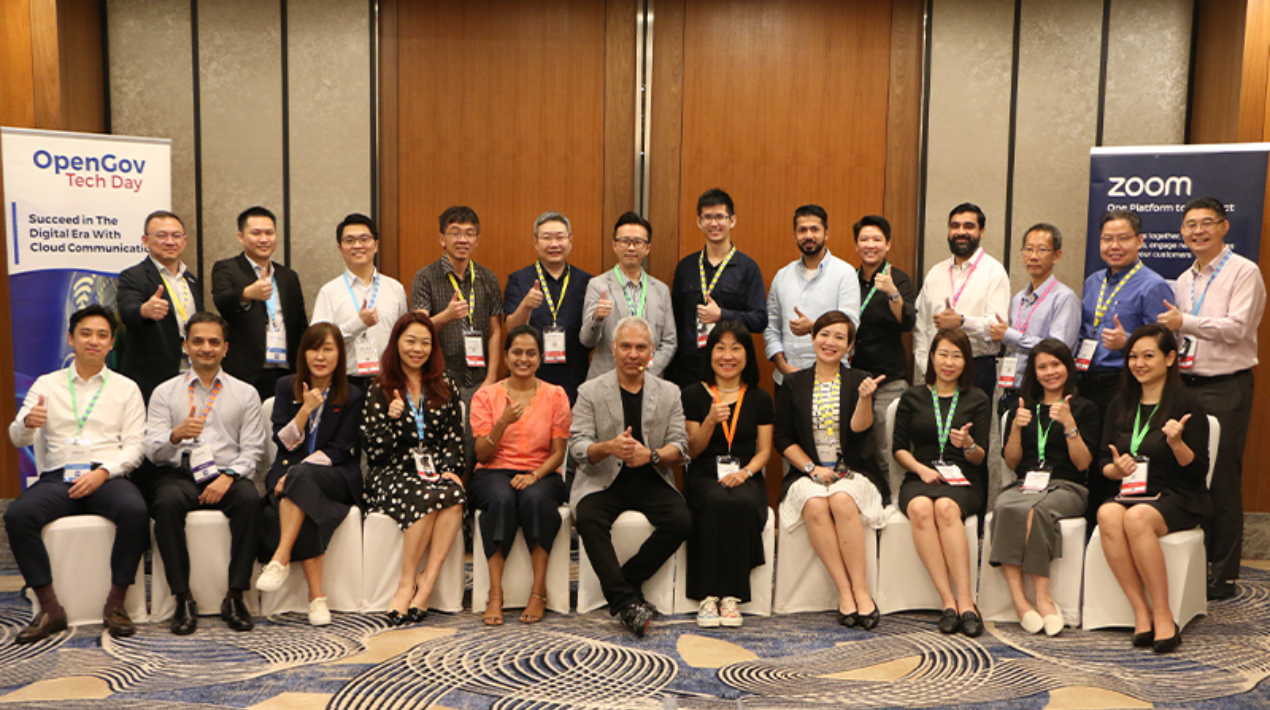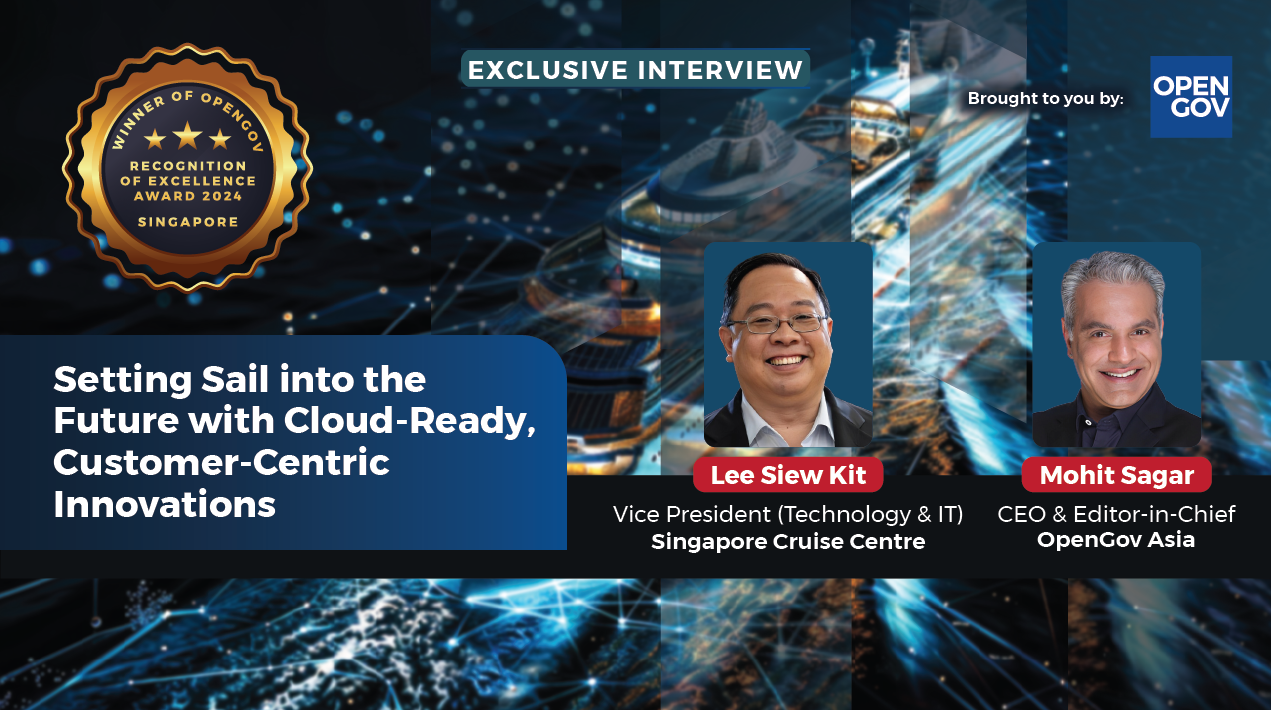
Cloud communications have transformed collaboration by enabling seamless interactions, fostering improved teamwork, and facilitating greater consumer involvement. By leveraging cloud-based communication tools, businesses can overcome geographical limitations, enhance operations, and unlock untapped growth opportunities.
Cloud communications offer numerous improvements over traditional methods, providing businesses with the scalability and flexibility required to swiftly adapt to changing communication needs. Additionally, they are highly adaptable and cost-effective, whether it involves seamless integration with other corporate systems, expanding to new locations, or accommodating additional users.
Another key advantage of cloud messaging is its ability to consolidate multiple communication channels into a single platform. This allows workers to collaborate and communicate seamlessly across various devices, at any time and from anywhere, utilising features such as voice conversations, video conferencing, instant messaging, and email that work together harmoniously. This integration enhances productivity, promotes teamwork, and facilitates informed decision-making.
Cloud communications enable businesses to leverage advanced features and technologies, such as intelligent call routing, which significantly enhance customer service and reduce wait times by ensuring incoming calls are directed to the most suitable team member capable of addressing them effectively.
By leveraging features such as interactive voice response (IVR), call queuing, and personalised welcomes, businesses can streamline their communication processes, improve customer satisfaction, and deliver professional and customised customer experiences.
Information can flow smoothly between customer relationship management (CRM) systems, giving agents access to client information and allowing them to provide highly individualised service.
These benefits lead to enhanced overall customer satisfaction, efficient handling of customer interactions and a positive perception of the company.
The OpenGov Tech Day on 20 July 2023 at Voco Orchard Singapore was a high-level event for decision-makers to study the newest trends and benefits of cloud technology across Singapore’s public sector, business, education, financial services, and healthcare sectors.
Opening Remarks

Mohit Sagar, CEO and Editor-in-Chief of OpenGov Asia, concurs that cloud communications play a vital role in the digital age by simplifying communication and collaboration for companies that heavily rely on technology. Cloud-based solutions enable seamless and efficient communication among team members, facilitating effective collaboration regardless of geographical barriers.
Modern communications solutions offer a plethora of features and user-friendly interfaces, making them easily accessible and widely accepted. Their simplicity and streamlined implementation processes encourage more organisations to adopt these solutions. By providing a user-friendly experience and simplifying complex communication processes, cloud communications drive greater adoption and usage among businesses.
“Innovative Unified Communications as a Service (UCaaS) solutions put collaboration first by combining different tools on a single platform to boost productivity,” he explains.
Mohit emphasises the significance of an intuitive user experience (UX) in driving companies to adopt cloud messaging solutions. By prioritising user-friendly and easy-to-understand UX design, companies can facilitate seamless onboarding and increase user adoption of their products. This, in turn, leads to enhanced productivity, streamlined teamwork, positive user feedback, and user empowerment.
By focusing on intuitive UX, organisations can unlock the full potential of cloud messaging and reap the benefits of improved collaboration and user satisfaction.
“Intuitive UX designs make onboarding and use easier, which makes it more likely that employees and stakeholders will use it,” he says. “These designs make it easy for people to start using cloud communications tools because they have user-friendly interfaces and streamlined workflows.”
They also boost productivity by making jobs easier to do and less complicated. With features like drag-and-drop interfaces, context-sensitive menus, and customisable layouts, users can get their work done quickly and focus on their jobs instead of fighting with the technology.
The user interfaces and user-friendly tools for contact and collaboration enable teams to collaborate seamlessly. Real-time messaging, simplified file sharing, and presence indicators enhance teamwork by facilitating easy communication, information sharing, and efficient collaboration among workers. These features empower teams to work together smoothly, enabling them to connect, share information, and collaborate efficiently, ultimately boosting productivity and fostering a cohesive working environment.
Furthermore, a positive user experience (UX) generates favourable feedback, leading to increased user satisfaction. Satisfied users are more inclined to advocate for the adoption of cloud communications solutions within their businesses, resulting in increased popularity and higher usage rates for these tools.
Mohit further highlights that a simple and intuitive UX empowers users by granting them the ability to customise their communication and collaboration experiences. These platforms allow for agile creation and deployment of new features, which helps businesses respond quickly to changes in the market.
With a range of personalisation options, tailored features and user-friendly settings, cloud messaging tools can be easily adapted to suit the unique needs and work styles of each individual. In the digital age, organisations need cloud-native tools to be able to come up with new ideas quickly.
Cloud-native platforms give the speed and freedom that needs to scale solutions based on demand. Integration and interoperability with other cloud-based apps and services make it easy to work together and make the switch to cloud-native solutions smooth.
“These platforms also make it easier to make interfaces and workflows that are easy to use, which improves the entire user experience,” Mohit reiterates.
Video-first solutions play a crucial role in facilitating better communication by providing high-quality video conferencing, visual and mixed multi-modal communication, and support for transformation projects. These solutions adapt to the needs and preferences of various groups of workers, making it easier for individuals to collaborate effectively and complete projects.
In cloud messaging, the ability to add to the architecture is a key part of meeting future needs. It helps service providers by making them more innovative and competitive. It also gives third-party developers the freedom to make solutions that are tailored to specific needs.
Cloud communications solutions need to meet both current and future requirements to be implemented and used successfully. Architectural extensibility lets organisations scale up without spending too much money, ensuring that they can adapt to changing communication needs and giving them a future-proof system that can grow and change as technology does.
“Video-first solutions enhance communication, collaboration, and productivity by addressing present needs and adapting to changing requirements,” says Mohit. “They embrace new technologies and accommodate evolving business environments, fostering a flexible and future-proof approach.”
To ensure a seamless transition to cloud communications, it is crucial to meet present requirements by selecting solutions that seamlessly integrate with existing technology, effectively interface with other systems, adhere to security protocols, and offer user-friendly interfaces, thereby minimising disruptions and facilitating a successful implementation.
As needs evolve over time, it is essential for cloud communications options to be adaptable and responsive. Given the ever-changing landscape of technology and business requirements, these solutions must demonstrate agility and the ability to swiftly adapt to new trends.
“By incorporating new features, technologies, and standards, cloud communications solutions can effectively meet future needs and stay ahead of emerging trends,” Mohit concludes.
Welcome Address

Nathan Guy, Head of UCaaS for Asia Pacific at Zoom, emphasised the importance of understanding customer and employee needs. This insight was underscored by a survey indicating significant technology investments by companies worldwide during the pandemic, highlighting the necessity of aligning technological investments with customer and employee preferences.
While the importance of understanding customer and employee needs is recognised, finding the right approach can still be challenging due to the need for flexible technology stacks in an ever-changing landscape and uncertain economy.
A study revealed that S$15 billion was spent weekly on technology during the pandemic, reflecting the significance of establishing a robust foundation in the technology stack to maintain a competitive advantage in the future.
“The question of whether the future workplace truly improves conditions for teams and clients is of utmost importance,” Nathan acknowledges. “At Zoom, we think it does. But to be successful, there are three key areas that must be addressed.”
Firstly, to stay aligned with the evolving nature of work, it is essential to continuously update collaboration and efficiency frameworks. Secondly, fostering stronger personal connections within the workplace creates an environment where individuals are happier and more engaged. Thirdly, meeting the updated standards of both customers and employees is crucial for achieving success in today’s dynamic business landscape.
In envisioning the future of a hybrid workplace, it is crucial to consider several key aspects including technology infrastructure, flexibility, communication and collaboration, emotional well-being and training and development needs. These factors play a vital role in shaping a successful and sustainable mixed workplace environment.
Organisations that use advanced customer service applications say that their employees are more engaged, they are more productive, and they work together better.
In this context, Nathan believes that Voice serves as the fundamental basis for digital transformation, acting as a seamless bridge between the physical and digital realms. It plays a crucial role in connecting the real world with the digital world, facilitating effective communication and enabling transformative changes in various domains.
“In a world where people are getting more and more connected, voice interaction should be at the centre, not on the edges,” he is convinced. “IP Voice is a key part of cloud-based voice strategies because it is cheap, easy to use, and provides high-quality contact.”
Voice is important for the future of work, both in terms of customer involvement and employee engagement, and companies continue to put money into this growing market.
Nathan notes that cloud-based interactions are replacing traditional teamwork to accommodate the requirements of hybrid and remote work. The integration of various collaboration tools such as messaging, meetings, conferencing, team chat, and information sharing is crucial in achieving the digital objectives of businesses.
Zoom has made significant investments in AI to enhance collaborative experiences. Collaboration platforms are developed with core technologies and provide industry and department-specific communication and collaboration solutions. Ultimately, the primary objective is to serve people and facilitate their success in the evolving work landscape.
Customer-facing teams often encounter various challenges. However, empowering these teams with the right tools and resources to become subject matter experts enables businesses to deliver more personalised and enhanced customer experiences.
Nathan reiterates the objective of integrating product innovation into a comprehensive, all-in-one solution that empowers knowledge workers and teams, simplifies collaboration with external customers, and facilitates business growth. This unified approach aims to streamline the modern workday, enabling seamless teamwork and effective customer engagement beyond organisational boundaries.
This encompasses the entire spectrum of employee collaboration, from morning schedule checks, chatting, and email communication to participating in meetings and huddles, as well as engaging in phone calls. Similarly, customer collaboration entails marketing events, webinars, sales processes, and overall customer experiences, all accessible through a unified interface.
The main goal is to increase Customer Lifetime Value by making sure that employee experience (EX) and customer experience (CX) work well together.
“While customer service leaders understand the significance of consistently providing excellent experiences, only a third of customers perceive improvements in customer service organisations,” Nathan reveals. “Businesses can face significant repercussions if they lose customers due to negative experiences.”
Research indicates that customer expectations have evolved over time, highlighting the necessity for businesses to promptly adapt and deliver exceptional customer experiences (CX). However, meeting customer needs in an uncertain world with limited resources can be challenging.
Nathan discussed the Global CX Excellence Report, which identified six key pillars of CX excellence: personalisation, trust, minimising customer effort, meeting standards, resolution and empathy. These pillars serve as crucial foundations for delivering exceptional customer experiences and building strong customer relationships.
“To meet these customer expectations, we need to think about the whole and work together across teams,” he says.

Jayraj Nair, Customer Experience Lead-ASEAN at Zoom, concurs that addressing the challenges of siloed teams and disparate tools is crucial in rethinking and transforming CX (Customer Experience) and EX (Employee Experience).
By 2024, satisfaction metrics suggest that companies prioritising a comprehensive experience for both customers and workers will outperform their competitors. Recognising the interconnectedness of customer and employee experiences and ensuring their holistic optimisation will yield a competitive advantage and contribute to overall business success.
Other reports indicate that adopting a total experience approach is essential, with an anticipated 60% of large businesses projected to embrace it by 2026. This holistic approach ensures a seamless and integrated experience for both customers and employees, driving enhanced satisfaction and corporate growth.
Combining employee productivity and customer experience (CX) strategies is crucial for consistently delivering exceptional customer experiences. By effectively integrating these two elements, businesses can foster seamless interactions between the company and its customers, leading to increased customer satisfaction and happiness. This harmonious exchange ensures a positive and satisfying customer experience while maximising employee productivity and engagement.
“Employee productivity” refers to the efficiency and effectiveness with which individuals perform their job responsibilities within a company. When workers are highly productive, they are able to deliver better service and support to customers, ensuring their needs are promptly addressed and met to their satisfaction.
Similarly, CX strategies encompass the deliberate planning and execution of actions aimed at enhancing the overall experience that customers have with a business. This encompasses various aspects such as personalised interactions, streamlined processes, user-friendly interfaces, and effective problem-solving capabilities.
Jayraj shares that Zoom offers a comprehensive CX+EX platform that seamlessly integrates both staff and customer experiences. This unified experience is facilitated by leveraging the end-to-end capabilities of the Zoom platform, allowing customers to access the desired functionality from the cloud at their preferred time and location. By providing a smooth and unified experience, Zoom enables businesses to enhance both customer and employee satisfaction through its versatile platform.
“The Zoom Contact Centre is seen as an exciting new feature that increases customer loyalty and retention by allowing for quick and personalised interactions with customers,” Jayraj says. “Zoom takes care of the hard work, so companies can focus on their employees and customers.”
Closing Remarks
Expressing his gratitude to the attendees for their active and thoughtful participation, Jayraj commended them for their insightful contributions that added depth to the discussions.
Jayraj highlighted the importance of every stage in developing a customer experience plan, which involves integrating various methods such as web chat, video, phone, and other relevant channels to enhance both user experience (UX) and customer experience (CX).
By seamlessly integrating these experiences, businesses can ensure that customer interactions are efficient, productive, and enjoyable for all parties involved, ultimately serving both internal and external customers effectively.
Zoom, he recapped, has transformed from a basic application into a robust platform, offering a comprehensive suite of tools such as Zoom Phone, telephony services, team chats, and meeting spaces. These features combine to provide enterprises with a comprehensive communication and collaboration experience, facilitating seamless connectivity, efficient team communication, and productive meetings.
He stressed the significant commercial value of leveraging Zoom’s wide range of products, highlighting their ease of integration and the immediate benefits they bring to businesses. By adopting and utilising these solutions, companies can tap into their full potential and unlock valuable advantages swiftly.
In closing, Jayraj reemphasised the importance of consistently delivering exceptional experiences across all touchpoints and reiterated the value of prioritising customer service. By adopting a customer-centric strategy, businesses can foster strong connections, promote loyalty, and achieve long-term success.
Mohit knows the importance of user experience (UX) and customer experience (CX) lies in their ability to enhance satisfaction, loyalty and overall success by delivering seamless and personalised interactions that meet and exceed customer expectations.
By leveraging the power of cloud solutions and video communication, organisations can enhance teamwork, foster stronger connections, and drive project success by enabling seamless and immersive collaboration among team members.
Moreover, in this digital era, he highlights the importance of technology alliances in fostering success across diverse industries, stimulating development, promoting growth and driving innovation. Progress can be accelerated by collaborating with technology specialists and merging ideas, research, and development efforts. The creation of new goods and services is frequently sped up by the combining of talents, resources, and viewpoints.
These alliances give businesses access to a larger ecosystem, opening up new possibilities and promoting expansion in the corresponding industries. They also present chances for market expansion since they give access to new customer categories, geographical areas, or industry verticals.
Businesses can share specialised knowledge, access cutting-edge technology, pool resources and collaborate with external technology partners to develop creative solutions and maintain competitiveness in the continuously changing market environment.
“Partnerships can play a crucial role in helping businesses penetrate markets more efficiently by leveraging existing networks and gaining access to a larger client base,” says Mohit. “This enables quicker market entry, greater brand recognition, and expanded market reach, all of which help the participating companies develop and succeed.”
















